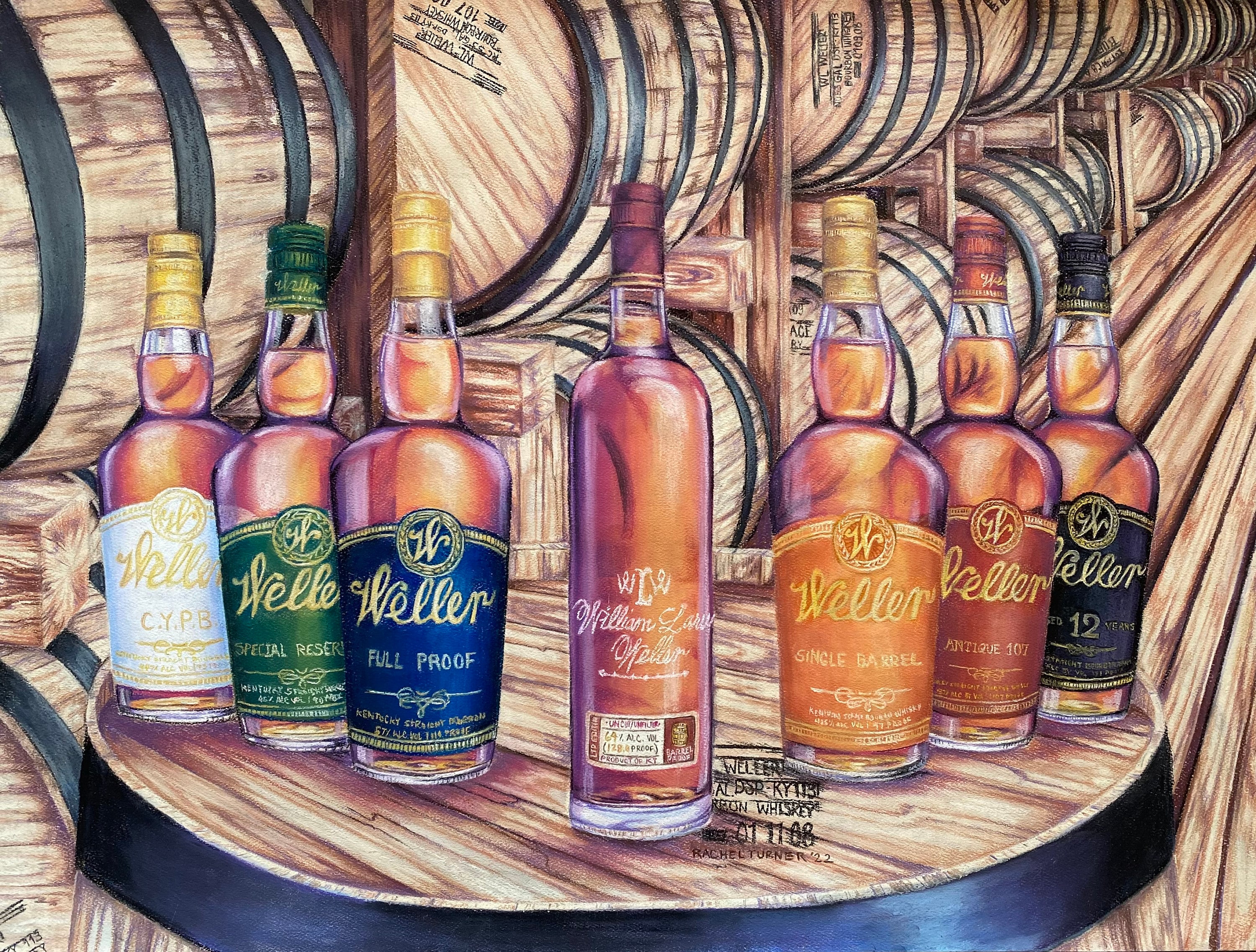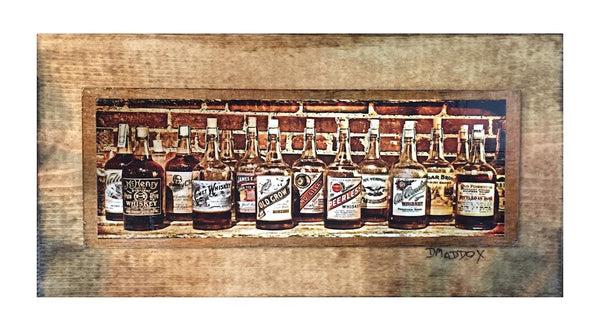Explore the World of Bourbon Art: A Journey Through Society and Workmanship
Explore the World of Bourbon Art: A Journey Through Society and Workmanship
Blog Article
The Value of Whiskey Art in Celebrating Heritage and Workmanship in the Beverage Sector
The intricate connection between scotch art and the party of heritage and craftsmanship within the drink sector can not be overstated. Via attentively made bottles and tags, whiskey brand names encapsulate their historic roots and the artisanal skills that define their manufacturing approaches.
The Historic Roots of Whiskey
At the heart of bourbon's attraction lies a rich tapestry of historical roots that trace back to ancient human beings. The origins of scotch can be linked to the distillation techniques of the Sumerians and Babylonians around 2000 BCE, where very early types of fermented grain beverages started to emerge. It was in the Middle Ages that the art of purification evolved considerably, specifically in Ireland and Scotland, leading to the development of scotch as we know it today.
The term "whiskey" itself acquires from the Gaelic word "uisce beatha," meaning "water of life." This phrase underscores the social significance of bourbon in Celtic cultures, where it was frequently connected with rituals, celebrations, and common bonding. By the 15th century, purification ended up being a recognized craft within monastic neighborhoods, leading the way for the establishment of lawful distilleries.
As trade routes increased, whiskey's popularity grew, going beyond local boundaries and recording the interest of connoisseurs worldwide. Realism Art. This historic journey mirrors not only the workmanship behind bourbon manufacturing however likewise its important duty in social and social contexts, noting it as a significant drink throughout background
Artistic Expression in Branding
Whiskey branding stands as a compelling junction of artistry and commerce, where aesthetic identification plays a vital duty in shaping consumer assumption. The aesthetics of whiskey labels, product packaging, and advertising and marketing products show not only the brand name's story but additionally its core worths and heritage. Through artistic expression, distilleries communicate a narrative that reverberates with customers, evoking emotions and stimulating links.
Making use of color, typography, and imagery in branding serves to set apart items in a saturated market. Standard concepts might evoke a sense of authenticity and craftsmanship, while contemporary styles can symbolize technology and forward-thinking. This tactical artistic instructions improves brand recognition and commitment, allowing consumers to build an individual partnership with the bourbon they select.
Additionally, creative expression in branding often acts as a celebration of local heritage. Distilleries regularly incorporate local signs or historic referrals right into their styles, developing a sense of place that welcomes customers to partake in a wider cultural experience. Ultimately, the creativity behind whiskey branding not just boosts visual appeal yet also improves the general story of the brand, fostering a much deeper admiration for the workmanship and heritage embedded in each container.
Workmanship in Bottle Design
The artistry obvious in scotch branding extends past visual identity to include the workmanship associated with container layout. Each bottle works as a vessel not just for the spirit within, yet also for the tale it outlines its quality, practice, and beginning. The layout procedure calls for thorough attention to detail, as elements such as material, closure, and shape contribute considerably to the total perception of the bourbon.
Workmanship in bottle layout includes choosing top notch glass that can boost the bourbon's shade and clarity, while likewise supplying a tactile experience for the customer. The silhouette of the address container should be both functional and aesthetically attractive, typically showing the heritage of the brand. Numerous distilleries decide for distinct shapes or printed logo designs that stimulate a sense of authenticity and background.
Furthermore, the tag style and typography play a vital role in connecting the brand name's narrative. Limited Edition. A well-crafted bottle not only captivates the consumer's eye but likewise reinforces the brand's dedication to high quality and tradition. In this way, the craftsmanship of bottle layout ends up being a crucial element of the whiskey experience, combining virtuosity with an extensive respect for heritage
Social Importance of Whiskey Art
Commemorating custom and workmanship, the cultural relevance of whiskey art transcends mere aesthetic appeals, linking with the social and historical narratives of the areas where it comes from. Each container acts as a canvas, showing the distinct tales, mythology, and customs that have formed local whiskey-making techniques. The detailed designs frequently reflect the heritage of the distillers, including signs and concepts that reverberate with the society and get more worths of their areas.

In enhancement, whiskey art plays a vital role in public celebrations and parties, serving as a concrete web link between people and their shared experiences. By appreciating the artistry in scotch product packaging, consumers cultivate a deeper understanding and regard for the craft, ultimately improving their pleasure of the beverage itself.
Modern Trends in Scotch Discussion
Recently, the discussion of scotch has advanced to show modern preferences and fads while still honoring conventional workmanship - Bourbon Art. Distilleries are progressively concentrating on aesthetic components that enhance see the overall alcohol consumption experience, connecting the gap in between heritage and modernity
Innovative bottle designs have arised, commonly including lasting products and imaginative labels that tell compelling stories. Many brands currently collaborate with neighborhood artists, infusing their items with unique visual expressions that resonate with consumers. Furthermore, limited-edition releases are commonly packaged in collectible containers, adding value and charm for lovers.

Verdict
In verdict, whiskey art offers as a vital avenue for revealing the heritage and craftsmanship intrinsic in the drink sector. With elaborate branding, ingenious container layouts, and culturally substantial artistic aspects, scotch brands effectively honor their practices and attach with consumers.


Workmanship in bottle design includes choosing top quality glass that can enhance the scotch's color and clearness, while also providing a responsive experience for the customer. In this way, the craftsmanship of bottle style comes to be a crucial element of the whiskey experience, merging virtuosity with an extensive regard for heritage.
In verdict, whiskey art serves as a vital channel for expressing the heritage and craftsmanship integral in the drink market.
Report this page